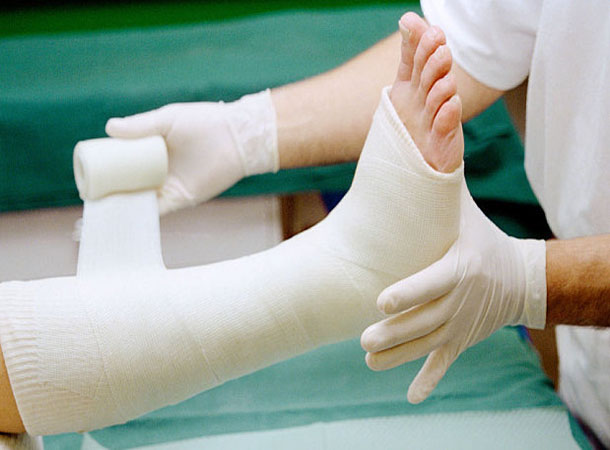1. Pineapple
Until your broken bone has healed, eat ½ fresh pineapple every day. The fruit contains bromelain – an enzyme known to lessen swelling and inflammation. Avoid canned or processed pineapples, which do not offer the same effect.
2. Check your protein intake
You might not associate protein with bone health, but when it comes to helping a broken bone heal, this is one area you need to pay attention to. Bones are made up of “living” protein, and depriving your body of protein during the healing process will result in a soft bone callus rather than the rigid ones necessary for bone strength.
3. Avoid Caffeine
Avoid drinking or eating items that contain caffeine, such as cola sodas, which have an effect on the absorption of calcium, which is needed to repair bones.
4. Vitamin Supplements
Vitamin supplements, such as boron, aid in the healing of bones. Other selections that encourage an increase in healing include magnesium and potassium. Another way to increase your intake of bone-healing vitamins is to choose foods that contain the above suggestions.
5. Avoid Smoking
The chemicals found in a cigarette work against the healing process of broken bones – even up to five months longer for serious breaks. This is because the amount of oxygen reaching bone tissue is reduced when the body comes in contact with tobacco products.
6. Avoid Alcohol
Since alcohol affects bone mass and disrupts the absorption of calcium, avoid drinking alcoholic beverages in an effort to maintain the strength of your bones.
7. Pillows
Elevating a broken ankle or foot helps reduce swelling. To encourage the healing process, raise the broken bone higher than your heart so that blood and fluid is drawn away from the injury. One of the best ways to elevate your broken bone is to stack several pillows at the end of a bed to use as a prop.
8. Ice
For the first one to two days following your broken bone, place a Ziploc bag filled with ice on your injury every 15 to 20 minutes. This method also works even if you’ve been fitted with a cast. Just make sure to use a towel between your cast and the bag of ice to avoid wetness.
9. Vitamin C:
Eat foods with vitamin C to encourage the development of collagen, which aids the body in forming healthy bones. Foods to consider for your diet include bell peppers, strawberries, oranges, lemon juice, papaya, and cauliflower
10. Make sure you’re eating the right amount of calories
It may not seem like it, but your body is using a lot of energy to repair that broken bone. Just because you are suddenly sidelined with an injury doesn’t mean you should cut way down on your diet. A severely broken bone could demand up to 6,000 calories a day for healing!
11. Take calcium and lysine
Calcium is essential to bone health, but if you don’t have the right amino acids, it isn’t going to be as productive as it could be. Lysine is important when it comes to calcium absorption, so make sure you include that in your dietary routine.
12. Increase antioxidants
Now is the time to start eating those foods rich in antioxidants. While it’s important to include antioxidants for cellular health, these compounds are also important in reducing inflammation at the site of the break. Inflammation can continue for weeks after the initial injury, and until inflammation starts to go away, the healing process will not fully engage.
13. Make sure to get enough minerals in general
While calcium is a must, experts indicate most people are deficient in essential minerals even when they aren’t trying to heal a broken bone. Make sure you get enough calcium, zinc, magnesium, copper, phosphorus, and silicon.
14. Consider your natural aids
Though not approved by Western medicine, there are some herbal remedies to help speed bone healing. People interested in adding alternative therapies should look into the use of arnica, wild comfrey, horsetailgrass, and burdock leaf poultice. Be sure to consult with an herbalist and your physician before using one of these suggestions.
15. Exercise
Granted, there are some things you can and can’t do with a broken bone, but if you are able to be mobile without risk of displacing the bone, you should do so. Being active promotes blood flow and thus speeds healing.
Sources:
http://www.grandmashomeremedies.com/broken-bones/
http://www.laopinion.com/2014/07/04/8-ways-to-help-a-broken-bone-heal-faster/
http://www.telegraph.co.uk
http://goindiya.blogspot.com/2014/03/Home-remedies-for-bone-fracture-heal-broken-bone-faster-naturally.html









